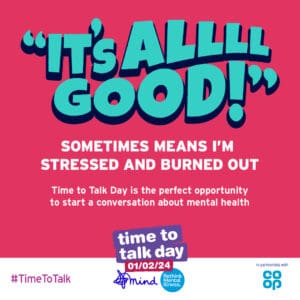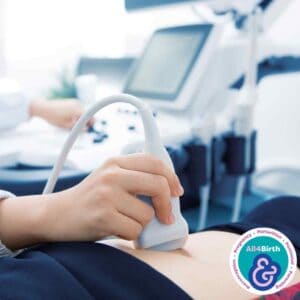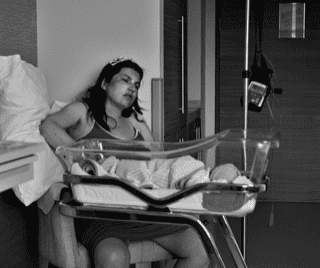Factsheet: Birth Trauma
By Dr Kim Thomas
CEO, Birth Trauma Association
Summary
The term birth trauma is used to refer both to post-traumatic stress disorder (PTSD) and other symptoms of psychological distress experienced after traumatic childbirth. Research shows that about 4-5% of women display symptoms that qualify them for a PTSD diagnosis after birth – about 30,000 in the UK. About 1% of fathers and partners develop PTSD after witnessing a traumatic birth. Birth trauma can be treated successfully by two standard therapies: trauma-focused CBT and eye movement desensitisation and reprocessing (EMDR).
What is birth trauma?
Birth trauma is not a diagnostic category, but a broad term applied to symptoms of psychological distress after childbirth. In some cases, those symptoms can be severe enough to qualify for a diagnosis of post-traumatic stress disorder (PTSD).
Research shows that about 4-5% of women develop PTSD after birth[i], which equates to about 30,000 women a year in the UK. Amongst high-risk groups (such as those with a previous history of trauma or mental illness), incidence rises to 15.7%.[ii]
Many more experience some trauma symptoms, with one study finding that a third of women reported their childbirth experience as traumatic.[iii] A 2022 review of research found that 1.2% of fathers developed PTSD after being present at their partner’s birth.[iv] This translates into about 12,000 a year in the UK.
Causes of birth trauma
In most cases, birth trauma is caused by a combination of traumatic events in the birth and interpersonal factors.[v] The traumatic events can include a sudden emergency requiring a caesarean section; a long and very painful labour; a difficult forceps birth; a premature or very ill baby; or a postpartum haemorrhage.[vi] Women often feel fearful that either they or their baby are going to die. The traumatic event may be compounded by unkind or even neglectful care – women often report having their concerns dismissed (being told that they are not in labour when they are, for example), or having procedures such as vaginal examination performed without their consent.[vii] Poor postnatal care can also contribute to the trauma, with women who feel physically and emotionally damaged after a traumatic birth often expected to look after their baby without any help.[viii]
Trauma is subjective, however. Sometimes to an outsider, the birth may not appear traumatic, but a woman may still develop birth trauma because the experience felt traumatising to her.
Some women have physical injuries after birth. Amongst women who give birth vaginally, 3.4% experience third- or fourth-degree tears – 20,000 women a year in the UK. Birth injuries can add significantly to the trauma, and are under-diagnosed and under-treated. The consequences of an untreated obstetric tear can include urinary and faecal incontinence as well as ongoing pain.
Symptoms of birth trauma
PTSD has four symptom categories[ix]:
- Typically these are flashbacks or nightmares. Flashbacks are not simply a visual memory, but an intense sensory experience, often encompassing sounds and smells, in which the individual relives a moment of the trauma.
- The individual avoids any reminder of the trauma – in the case of postnatal PTSD, this could include other women with babies, health professionals and clinic appointments.
- Negative alterations in cognition or mood. This includes feelings of guilt and sadness, exaggerated self-blame and an inability to recall aspects of the trauma.
- This entails feeling constantly on high alert. A woman might feel her heart racing, or anxious that something bad is about to happen, as well as short-tempered and irritable.
To qualify for a PTSD diagnosis a person must have at least two symptoms from the first two categories, and at least one from the third and fourth categories. Arousal symptoms, for example, might include irritable or aggressive behaviour, heightened startled response, a feeling of being constantly on guard and expecting danger, or difficulty sleeping. Only a psychiatrist can diagnosis PTSD. Those who have some symptoms, but not enough to qualify for a PTSD diagnosis, can still benefit from treatment, however.
Anecdotally, some women report having PTSD symptoms misdiagnosed as postnatal depression (PND) – though many women who have postnatal PTSD also qualify for a PND diagnosis.[x]
Impact of birth trauma
At a time when a woman is already dealing with the difficulties and stress of looking after a newborn, birth trauma can be debilitating. Women may avoid mother-and-baby groups, for example, because they fear being triggered and experiencing flashbacks. A medical procedure that reminds women of the birth (a cervical smear, for example) can induce feelings of terror. Women may be so fearful of the baby coming to harm that they refuse to leave the house or let anyone else hold the baby.
Women often find that birth trauma affects their life in multiple ways. Some find it hard to bond with their baby and are racked with guilt[xi]. In many cases, the relationship with their partner deteriorates, particularly if the partner doesn’t understand why the woman is so distressed or doesn’t like her talking about her trauma.[xii] Sometimes both partners have birth trauma, which can add to the stress.
Other family members, friends and even health professionals may tell a woman to stop dwelling on the trauma and move on – which can increase her sense of isolation. Some women find it impossible to return to work, either because the workplace itself is triggering, particularly if they work in a clinical setting (though even an ordinary office can have features, such as strip lighting, that trigger flashbacks) or because they have physical injuries that make it impossible to do their previous job.
Treating birth trauma
The National Institute of Health and Care Excellence (NICE) recommends two treatments for PTSD: trauma-focused CBT and eye movement desensitisation and reprocessing (EMDR)[xiii]. These are also effective in treating people who have some trauma symptoms, even if they don’t qualify for a PTSD diagnosis. Both therapies take about 10 to 12 sessions and involve an element of reliving the trauma until it moves from short-term memory, where it feels vivid and real, to long-term memory, where it feels like any other memory. These treatments are available on the NHS, and in England it is possible to self-refer through local Talking Therapies services. In Scotland, Wales and Northern Ireland, referral is through a GP or health visitor.
Some parents with birth trauma can benefit from peer support – relating your story to someone who understands what you’ve been through can be an important first step to recovery.[xiv] The Birth Trauma Association offers peer support both through a Facebook group and a team of peer supporters answering emails and phone calls. You can find out more at www.birthtraumaassociation.org.uk.
Birth Trauma Awareness Week
The Birth Trauma Association holds an annual Awareness Week. In 2023 it runs from July 16-22, and the theme is healing. We’re asking people who have experienced birth trauma to post a picture of anything that is helping them with the healing process, with the hashtag #HelpingMeHeal.
References
[i] Yildiz P, Ayers S, Phillips L. The prevalence of posttraumatic stress disorder in pregnancy and after birth: A systematic review and meta-analysis. Journal of Affective Disorders 2017; 15, 208, 634–645.
[ii] Grekin R., O’Hara M. Prevalence and risk factors of postpartum posttraumatic stress disorder: a meta-analysis. Clinical Psychology Review 2014; 34, 389–401.
[iii] Soet, J, Brack, G, Dilorio, C. Prevalence and Predictors of Women’s Experience of Psychological Trauma During Childbirth. Birth 2003; 30, 1, 36-46
[iv] Heyne CS et al. Prevalence and risk factors of birth-related posttraumatic stress among parents: A comparative systematic review and meta-analysis. Clin Psychol Rev. 2022 Jun; 94:102157.
[v] Ayers, S & Ford, E. PTSD following childbirth. In: Martin, C.R (Ed.), Perinatal mental health: a clinical guide. 2012. 155-164. https://openaccess.city.ac.uk/id/eprint/5036/5/Chapter_final_version_(1).pdf
[vi] Ayers, S et al. The aetiology of post-traumatic stress following childbirth: A meta-analysis and theoretical framework. Psychological Medicine. 2016. 46(06), 1121–1134. doi:10.1017/S0033291715002706
[vii] Hollander, M et al. Preventing traumatic childbirth experiences: 2192 women’s perceptions and views. Archives of women’s mental health. 2017; 20, 4, 515–523. https://doi.org/10.1007/s00737-017-0729-6
[viii] de Graaff LF et aI. Preventing post-traumatic stress disorder following childbirth and traumatic birth experiences: a systematic review. Acta Obstetricia et Gynecologica Scandinavica 2018; 97, 648–656
[ix] American Psychiatric Association Diagnostic and Statistical Manual of Mental Disorders, 5th edition. 2013
[x] Ayers, S and Ford, E. 2012. ibid.
[xi] Kjerulff, K et al. A prospective cohort study of post-traumatic stress disorder and maternal-infant bonding after first childbirth. Journal of Psychosomatic Research 2021. doi: 10.1016/j.jpsychores.2021.110424
[xii] Elmir R et al. Women’s perceptions and experiences of a traumatic birth: a meta-ethnography. Journal of Advanced Nursing 2010; 66, 10, 2142-2153
[xiii] National Institute for Health and Care Excellence. Post-traumatic stress disorder. 2018. https://www.nice.org.uk/guidance/ng116
[xiv] McLeish, J and Redshaw, M. Mothers’ accounts of the impact on emotional wellbeing of organised peer support in pregnancy and early parenthood: a qualitative study. BMC Pregnancy Childbirth 2017; 17, 28. doi: 10.1186/s12884-017-1220-0













